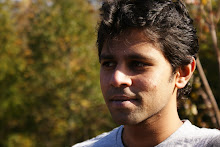“Make hay while the sun shines”, said an old proverb. And like most proverbs, it has been clichéd severely and the actual meaning never given the importance. India has emerged as a driving economy; well, at least in the current day scenario. Economists attribute this to the population, education, the flat world and a lot of other factors. True, in some sense. But these are driving only the urban development and catering largely to the markets outside. The sunshine factor rarely figured in our planning 21st century economy.
As Mr. Nandan Nilekani puts in his book, Imagining India, India is enjoying the first dividend of a double hump population boom. The population is young compared to the graying American and European populace. The south, with a slightly lower and more urban centric population is providing the first population dividend by utilizing the knowledge boom. Surveys indicate, the median age in northern India is much lower or younger than the current south Indian median age. This implies that the next economic surge would be driven by the folks to the north of the Vindyas.
The focus of our economics should now shift from creating a corpus, which we have successfully managed over the last two decades, to sustainability. The population of northern India is a challenge to figuring the demographic dividend. The current model of knowledge and service industry that has driven the southern rise as economic behemoths is not necessarily suitable for paving the northern economic plans. With a focus on self sustenance, a single vertical will not suffice. It may seem as a case of devolution, but shifting the focus from IT and technology to Agrarian and infrastructure will provide the sustainability needed.
The economic sunshine is rather the concept of utilizing sunshine to drive economics. Our tendency to ‘move west’ to find metaphorical gold mines is a slight misnomer. We have, through history, moved towards the poles in search of these gold mines. The people of the tropics never had to worry about optimizing the utilization of Sunlight as we receive nearly 12 hours of it throughout the year. When we move towards the poles, sunlight is evidently a major economic factor. An early understanding of this helped the people to develop concepts such as Daylight Savings and higher utilization during late spring, summer and early fall. Receiving up to 18 hours of sunshine during these periods has helped them to work harder towards tasks that require the sunlight factor- infrastructure, agriculture, etc. During the winters, efforts are made to utilize the maximum of short sunlight hours and discover alternate tasks and jobs for the dark early afternoons. Whereas we, in the tropics, have considered the sunlight as a luxury and wasted it over the years.
Our typical office hours start from 0900 and in the case of government agencies at 1030 and beyond. Essentially, we are losing an average of four precious sunlight hours to sleep and other trivialities. A focused shift of work hours to at least 0730 would help us utilize more sunlight than we currently use. Another advantage of this would be minimizing our energy consumption. The current efforts to reduce global warming and carbon footprints will be supplemented by this theory. The north Indian economic dividend will be enabled through employment in industries where sunlight is a key factor.
Of course, there are industries that do not require sunlight. The flat world has changed the dependencies a lot. This however is only a small vertical that is fueling the India of tomorrow. The other skyscrapers in the graph are yet to rise, and only a uniform growth in all sectors would help in building a sustainable economy. We cannot be satisfied by a two decade boom and live in its shadows for the next century.
The first transition.
The discovery of a new way, and that endless opportunities exist.
A period that establishes the theme; follows the customary introductions and precedes the inevitable end.
Dedicated to discovery and definition.
The Second Act is home to infinite possibilities.

Very interesting blog. A lot of blogs I see these days don't really provide anything that attract others, but I'm most definitely interested in this one. Just thought that I would post and let you know.
ReplyDelete